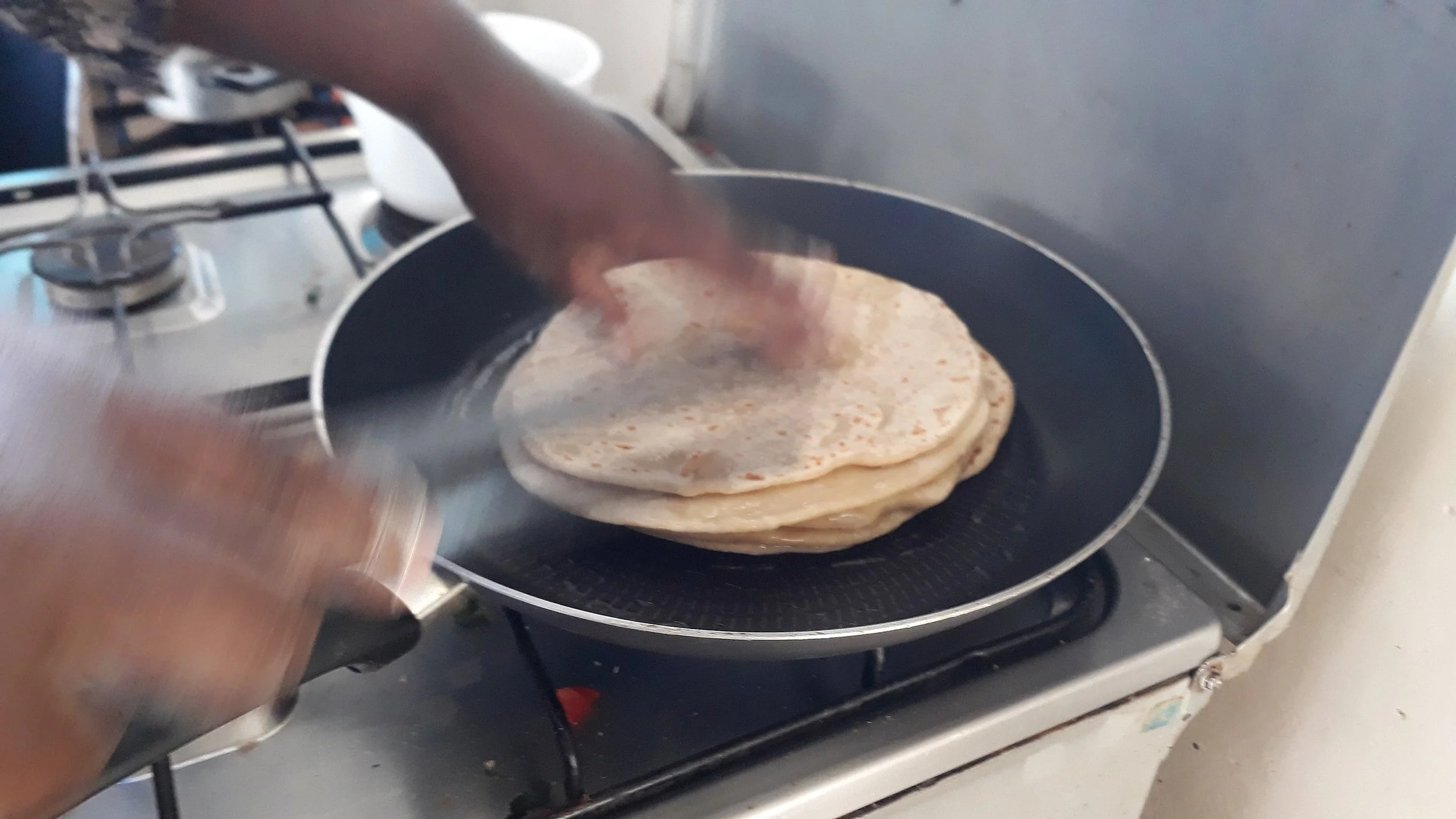Chapati’s Other Identity
By Barakat Abdulsalam Abisola
East Africa has grown to develop its own designated chapati that is not just only food but culture and identity—a multilayered chapati cooked with a considerable amount of oil, unlike the Indian chapati that has no layers or oil. Photo by GioRan, CC BY-SA 4.0, via Wikimedia Commons.
It is said that if you visit an East African and you didn’t eat chapati, it means your host is not an East African. Isn’t it amazing how food serves as our identity?
Chapati is widely known among East Africans. No celebration or festival passes without it flying around.
“Chapati is one of the favorite dishes in East Africa. It can be breakfast, lunch or dinner,” says Mesele, a Kenya lady who taught me the art of chapati. “Chapati is a must–cook for visitors. It can’t be left out during festivals. Christmas is not Christmas without chapati for breakfast. We love chapati like how Nigerians love suya.”
Sarah Obama, the third wife of Barack Obama’s grandfather, confirms its importance in Kenyan culture. When asked how she planned to celebrate Obama’s presidential election win. She said she would cook a feast. And what would that be? “Chapos,” she replied, saying it the Kenya way.
It is also called roti, safati, shabaati, chapos and roshi.
This flatbread is as essential to East Africans as water is to life. However, despite being a staple in East Africa, it wasn’t known until India came to East Africa during the colonial period. The British government brought Indian laborers to build railroads across East Africa.
An article by professor S. Bhatnagar of Punjab University published in Awaaz, a magazine for the Africa-India diaspora, noted the efforts of Alidina Visram, an Indian merchant and philanthropist who played a prominent role in the development of East Africa. Visram opened many stores and tea stalls for the workers across the railway side during the railway construction, all of which probably served chapati.
After the project, many of them stayed back and became merchants in East Africa. They employed Africans to help with their enterprises in the urban area. Sometimes they paid them with ingredients such as flour, sugar and cooking oil. Some of these workers also helped in the production of chapatis.
This later became a common dish among the African urban workers. These workers go back home with flour and other culinary ingredients they were paid with. Circulation between the rural and urban areas inevitably increases, making chapati culinary ingredients became one of the main commodities of trade between Indians and East Africans during the colonial era. This was how chapati was introduced to the region.
Decades later, East Africa has grown to develop its own designated chapati that is not just only food but culture and identity—a multilayered chapati cooked with a considerable amount of oil, unlike the Indian chapati that has no layers or oil.
“Indians in Kenya think it is more like Indian paratha,” says Mercy Mugo, who serves it in the hotel she manages in Embu.
When I asked my friends how often they eat chapati, they chorus: a lot. Kevin Mwachiro, who's worked for the BBC said "most Kenya households have them at least once a week for dinner and for me, getting to eat a good chapati is a delight".
Beyond its taste, one of the beautiful things about chapati is its endless possibilities. You can go the Kenyan way and eat it with sukuma waki stew, or go the Ugandan way and eat Rolex (egg omelet and vegetables wrapped in chapati). The bread’s softness makes it easy to use as a wrap or dunk into sauces or chai.
It is super simple to make with just five ingredients and a little energy to make the dough soft. Try it with this simple recipe mostly used by Kenyans.
We all share an identity that brings us closer together and that identity can be food. Hence, when you think of chapati, think of people who have made it part of their everyday life.
East African Chapati
1 cup cooking oil
1 tablespoon sugar (optional)
1 tablespoon of table salt
3 pounds (10 cups) flour; more for shaping
4 cups lukewarm water
Mix oil, sugar, salt and warm water in a bowl. Add flour and mix till all the ingredients blend. Knead the dough for 10-15 minutes until the dough becomes soft.
Divide the dough into pieces and make them into 15-20 balls using your palms. Cover the balls with a clean kitchen napkin for 10-15 minutes.
Get a rolling pin and board. Pick a dough ball at a time and place it on the board. Roll out to form a not too thin circle shape
Rub oil and sprinkle flour on the surface. Roll the dough into a round.
Use the dough to form a coil (this will help you achieve the chapati layer) repeat the process till all the balls are made into a coil. Cover again for 10-15 minutes.
Pick a round of dough at a time. Sprinkling some flour on the board. Roll out the coil-like-dough to form a thin circle shape
Warm your skillet over medium heat. Pick one dough at a time and place the circle dough inside. Cook till bubbles appear and flip. Rub a little oil on the cooked surface, press gently against the skillet and flip again. Leave for 10-15 seconds. Repeat the process for the other side.
Congratulations! Your chapati is ready. Remove the chapati and cover it with a clean kitchen napkin.

